Tuning In
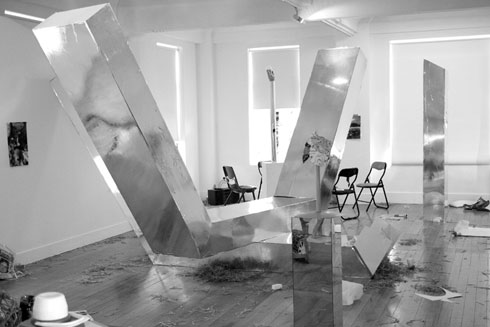
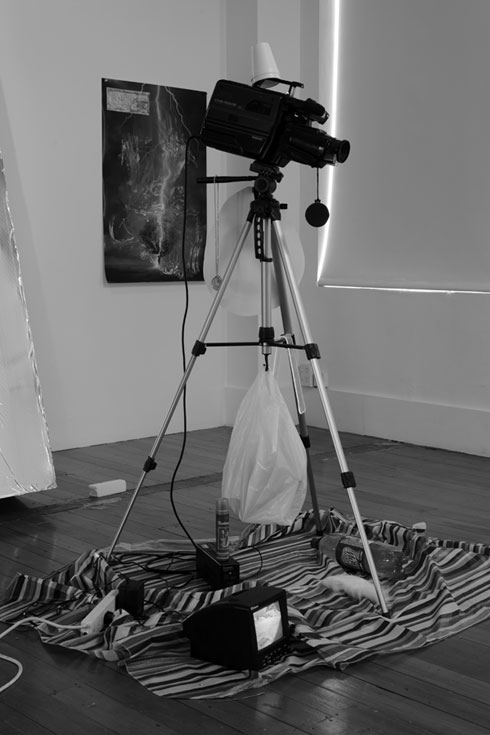
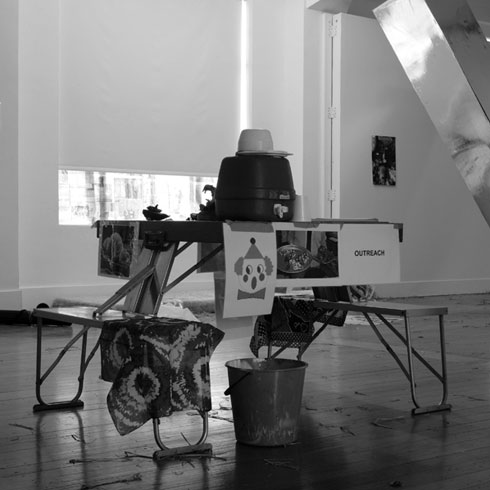
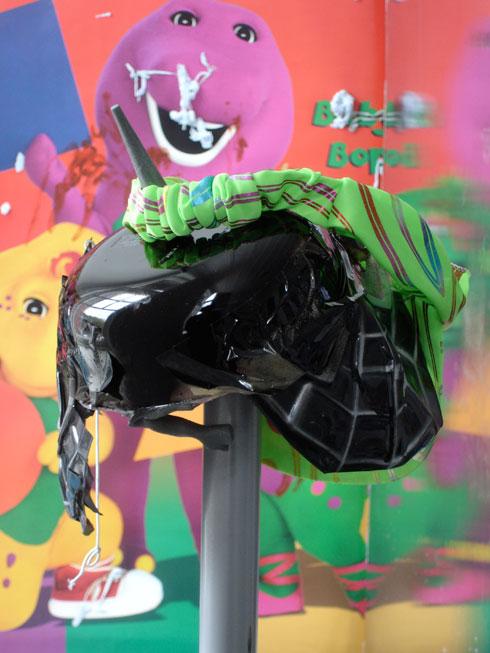 Text: Melissa Loughnan Images: Dan Arps
Text: Melissa Loughnan Images: Dan Arps
Auckland-based artist Dan Arps explores fictional narrative and anti-relational or anti-aesthetic aesthetics in his work. Recently awarded the Walters Prize in recognition of the body of work presented in his 2008 exhibition Explaining Things at Gambia Castle, the artist is gaining due recognition for his practice that extends across installation, collage and sculptural form.
Arps completed a Masters of Fine Arts from the Elam School of Fine Arts, University of Auckland, in 2006 and a Bachelor of Fine Arts (Sculpture) from the School of Fine Arts, University of Canterbury, in 2000. Recent solo exhibitions include Shallow Relief, Gambia Castle, Auckland, 2009; Toyota Corolla, Neon Parc, 2009; Affirmation Dungeon, Jack the Pelican Presents, Brooklyn, U.S.A, 2008; Motivation Bunker, Neon Parc, 2008; Explaining Things, Gambia Castle, Auckland, 2008; Fractal Tears, Michael Lett, Auckland, 2008; and Gestapo Pussy Ranch, Physics Room, Christchurch, 2007. Selected group exhibitions include Cross COlouring, Hell Gallery, 2009; Neon Parc, Tokyo 101 art fair, Tokyo, 2008; I DIG YOUR VOODOO, Joint Hassles, 2007; and Omnipresents, Gertrude Contemporary Art Spaces, 2007.
Arps shows with Neon Parc in Melbourne and Michael Lett and Gambia Castle in Auckland. He is also co-editor of New Zealand’s Natural Selection magazine.
Melissa Loughnan caught up with Arps post-prize.
Melissa Loughnan: Patrice Sharkey’s recent University of Melbourne thesis describes Gestapo Pussy Ranch (Physics Room, 2007) as ‘an exceedingly unpleasant mess. Straw, crumpled newspaper and vandalised posters littered the room, creating something akin to an abandoned site. Adding to this sense of discomfort was a suspect video camera set up to film a worn out mattress placed in the corner of the room; while a large-scale minimalist sculpture invaded and encumbered most of the space. Rather than the glossy finish applied to Donald Judd’s metal cubes, Arps’ roughened structure had a creased and battered silver coating.’
The exhibition seems to have been one of your most outrageous to date, would you agree? What was your intention with Gestapo Pussy Ranch?
Dan Arps: Maybe it was a bit of a jarring show, but I guess I was trying to work some things out at the time. I don’t want to be outrageous for the sake of it.
The title came from a moment in one of the short stories that make up Brett Easton Ellis’ The Informers. Gestapo Pussy Ranch is a novel that a teenage girl sees on her uncle’s book shelf. So it was a work that based on the idea of zooming in on the novel within a novel or, according to some kind of sloppy logic, a film set within a film set or a sculpture within a sculpture. I was interested in the idea that if you do it right then everything sits in a fictional frame so it is not a real sculpture but fictional sculpture, and it somehow becomes more alive by not being real.
In the end, I think I wanted to just show everything as a kind of pornographic gesture. I like the idea that the visitor is implicated in the whole scenario as a potential protagonist. You know, it’s all there for you – if you want to, go right ahead.
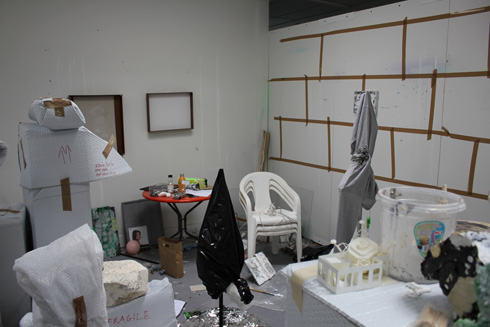
ML: By implicating the visitor in your scenarios, are you intentionally aiming to make the viewing space uncomfortable? And would you say that your more recent works extend from these ideas?
DA: I think it is more about making the space have a charge. I’m not sure if I want to make people uncomfortable, but I want people to be aware of their position, so that nothing is really contained and the space is more of a field. The recent works expand on that, but they have a different kind of energy: they are more gentle, maybe a bit slighter, but they share a sense of
being some kind of problem or recurrence.
ML: Yes, from what I’ve seen of your recent work, you could say that it has more of a ‘controlled’ sense of chaos but similar energy. Explaining Things at Gambia Castle in 2008 certainly seemed to carry on from Gestapo Pussy Ranch, with a further refinement in the installation and selection of works. How do you generate your imagery and where or how do you source your materials?
DA: A lot of what I do comes from just walking around in the city. I look for the things that suggest that the place is already in ruins. Part of it is using things that I find on the street. Part of it is also about tuning in to the culture I consume: what do I watch on TV, where do I like to hang out, etcetera. As far as materials go, I only want to use very basic and easy-to-find things – things from hardware stores, things that anyone can get.
ML: Do you, at times, consciously aim to evoke imagery that is intentionally unattractive or, as Sharkey argues, about ‘anti-relational aesthetics’?
DA: I tend to go for things that I feel ambivalent about, because those are the things that keep me thinking for the longest. I feel that way about relational aesthetics, the idea of just sharing everything, or of having a temporary reordering of social arrangements, but I’m more interested in what happens after the party and whether everything just goes back to the way it was.
Dan Arps
Next story: Moving Statics – Arthur & Corinne Cantrill




